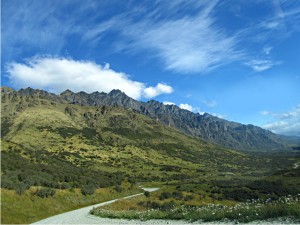
Indian english literature pdf by Suresh hosamani on Scribd
History of English language and literature in India starts with the advent of East India Company in India. It all started in the summers of 1608 when Emperor Jahangir, in the courts of Mughals, welcomed Captain William Hawkins, Commander of British Naval Expedition Hector. It was India's first tryst with an Englishman and English. Jahangir later allowed Britain to open a permanent port and factory on the special request of King James IV that was conveyed by his ambassador Sir Thomas Roe. English were here to stay. As East India Company spread its wing in southern peninsula, English language started to get newer pockets of influence. But it was still time for the first English book to capitalize. Late 17th century saw the coming of printing press in India but the publication were largely confined to either printing Bible or government decrees. Then came newspapers. It was in 1779 that the first English Newspaper named Hickey's Bengal Gazette was published in India. The breakthrough in Indian English literature came in 1793 A.D. when a person by the name of Sake Dean Mahomet published a book in London titled Travels of Dean Mahomet. This was essentially Mahomet's travel narrative that can be put somewhere between a Non-Fiction and a Travelogue. In its early stages, the Indian writings in English were heavily influenced by the Western art form of the novel. It was typical for the early Indian English language writers to use English unadulterated by Indian words to convey experiences that were primarily Indian. The core reason behind this step was the fact that most of the readers were either British or British educated Indians. In the coming century, the writings were largely confined to writing history chronicles and government gazettes. In the early 20th century, when the British conquest of India was achieved, a new breed of writers started to emerge on the block. These writers were essentially British who were born or brought up or both in India. Their writing consisted of Indian themes and sentiments but the way of storytelling was primarily western. They had no reservation in using native words, though, to signify the context. This group consisted likes of Rudyard Kipling, Jim Corbett and George Orwell among others. Books such as Kim, The Jungle Book, 1984, Animal Farm and The man-eaters of Kumaon etc were liked and read all over the English-speaking world. In fact, some of the writings of that era are still considered to be the masterpieces of English Literature. In those periods, natives were represented by the likes of Rabindra Nath Tagore and Sarojini Naidu. In fact, Geetanjali helped Tagore win Nobel Prize for Literature in the year 1913. There was a lull for more than 3 decades when India was passing through the era of aspiration and reconstruction. Some sporadic works such as A Passage to Indian by E M Foster, The Wonder that was India by E L. Basham and Autobiography of an unknown Indian by Nirad C Chaudhuri though set the stage on fire but were unsuccessful in catalyzing and explosion. It was in late seventies that a new breed of Convent, boarding school educated and elite class of novelists and writers started to come on block. The likes of Salman Rushdie, Vikram Seth, Amitabh Ghosh and Dominique Lepierre set the literature world on fire. Rushdie' s Midnight Children won Booker in 1981 and send the message loud and clear that Indians are here to stay. Arundhati Roy and Kiran Desai repeated the feat when they won Man Booker in the year 1997 and 2006 respectively. In the mean time, a new crop of authors such as Pankaj Misra, Chetan Bhagat, Jhumpa Lahiri, William Dalrymple, Hari Kunzuru have arrived on the international scene and their writings are being appreciated round the globe. A special mention to Jhumpa Lahiri and her work; the inspiration of her work stems from the emotional crisis generated from cultural Diaspora and identity crisis that Indians suffer from when they live outside the boundaries of their own culture and geographical setting. She received a prestigious accolade of Pulitzer Prize for her famous compilation of short stories called The Interpreter of Maladies, in 2000. She is an active member of the Arts and Humanities department on US President�s committee. She was appointed by President Barrack Obama himself. India became independent from Britain in 1947, and the English language was supposed to be phased out by 1965. However, today English and Hindi are the official languages. Indian English is characterized by treating mass nouns as count nouns, frequent use of the "isn't it?" tag, use of more compounds, and a different use of prepositions. With its distinct flavor, Indian English writings are there to stay. With the surge of English speaking population, the future looks anything but 

No comments:
Post a Comment